In our recent issue on vintage electronics, we asked how long it takes vintage items to become vintage. How much time has to pass before a heap of “old technology” makes a comeback as a prized, vintage collection.
There is no right answer to this question. But for VHS, it might be sooner than you think.
Last week, a near-mint video cassette of the 1985 classic Back to the Future sold at auction for $85,000. This is the highest price ever paid for a VHS tape, and may kick what has traditionally been a very sleepy collector’s market into a higher gear.
I’m sure many of you have random videotapes lying around in storage. These things might be doing more than just gathering dust – they may be gaining value. (Well, some of them, at least)
So, where is this newfound interest in VHS coming from? And what makes video cassettes valuable in the first place?
Let’s find out 👇
Table of Contents
A brief history of VHS
VHS technology was invented in the 1950s, driven by electronics companies like AMPEX.
AMPEX was a Silicon Valley company that invented the world’s first video tape recorder; an enormous machine called the VRX-1000. It weighed a ton and cost $500k in today’s dollars.

AMPEX quickly became a leader in audio tape technology, and over the next 20 years, worked hard to reduce the size and weight of these gigantic beasts.
After a few decades of tinkering, the technology was ready for home use. VHS tapes became commercialized in the 70s and quickly took over the home entertainment market.
However, by the early 2000s, VHS was unofficially dead. DVDs offered far superior technology, and rapidly overtook videotapes as the modern way to watch movies. And that’s to say nothing of Netflix, whose streaming technology was two technology leaps ahead, and was the final nail in the coffin for all things VHS.

But fast-forward to 2022, and videotapes are gaining some momentum once again.
According to eBay, VHS tape sales have consistently grown 5% per year since 2016, and are projected to grow by 10% this year.
250,000 tapes are now sold on eBay per year. And in some parts of the world, VHS sales are up 83% YoY. Not quite the same as what we had 50 years ago, but still nothing to scoff at.
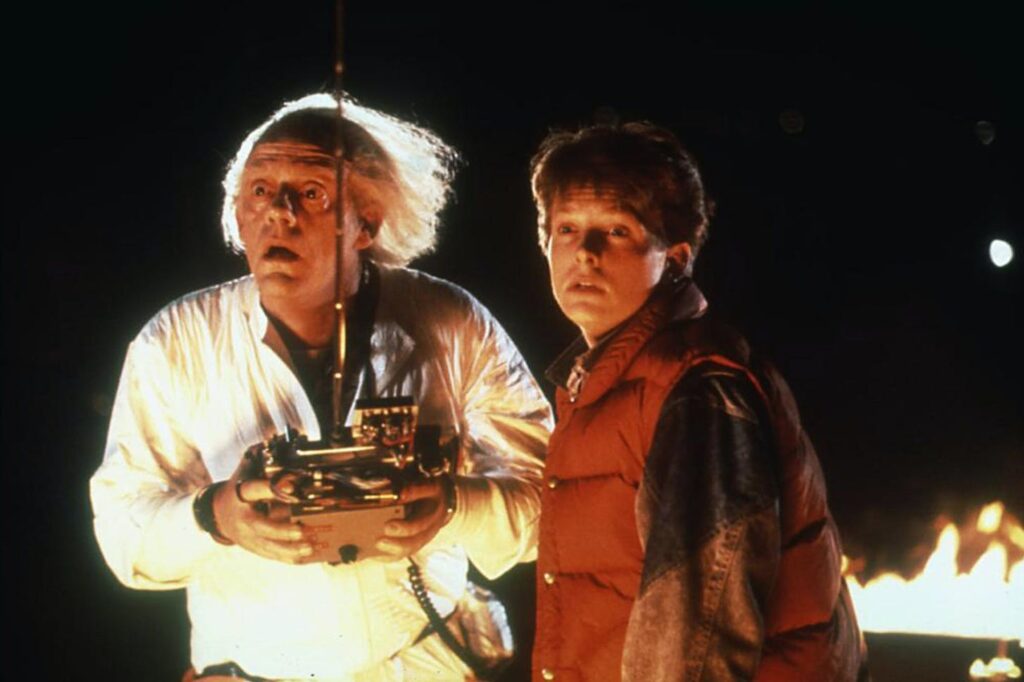
Why the surge in popularity?
I don’t really know.
Some may point to the resurgence of vinyl as a similar phenomenon. Both are media collectibles, chock full of history and utility.
But I think there are a few important differences between vinyl and VHS.
First, while vinyl is less convenient than streaming audio, it has a higher quality sound. Vinyl collectors like myself are adamant that it just plain sounds better, and the often intricate cover art adds a whole other layer of utility.
The same cannot be said of videotapes. The picture quality is objectively worse, and people don’t look back fondly on having to spend 15 minutes rewinding each tape before returning it.

Lowering the needle onto a vinyl record and hearing the first bursts of crisp, clear is always a special moment. In comparison, VHS technology feels frustratingly clunky.
Oh, and if you put a VHS tape too close to anything with a magnetic field (magnets, electrical lines, even surge protectors), it can get erased.
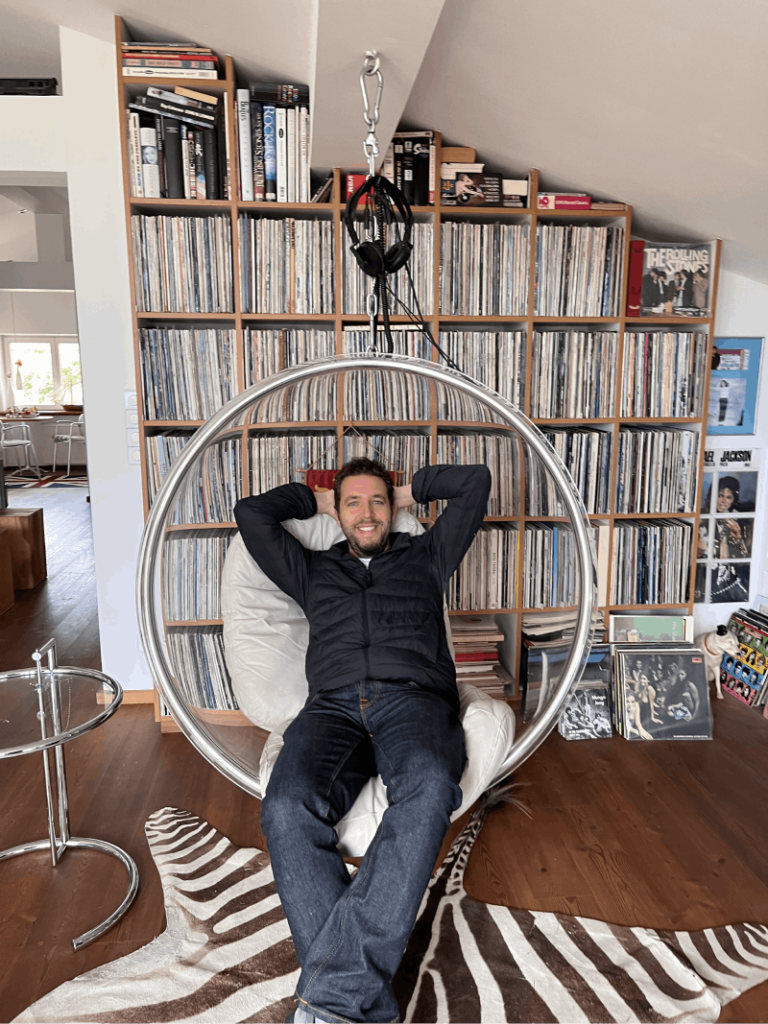
In a nutshell, VHS is less convenient, and has worse quality. I mean, what’s to love here? Is anyone going to actually watch these? What makes this market special?
Nostalgia (again)
Some collectors argue watching VHS feels more “authentic.” But what they’re really saying is that it feels more “nostalgic.”
Nostalgia is one of the biggest reasons vintage goods have risen in popularity. Perhaps scrolling through an endless sea of TV shows and movies just doesn’t hit the same.
The pre-digital aesthetic
VHS tapes are also one of the last remaining relics of the analog media era. In a world overpopulated by digital technology, this does feel extra special.
The 80s-90s aesthetic has had a huge boom in recent years. 80s fashion is flooding stores, Kate Bush’s “Running Up That Hill” is on the rise (again), and the 80s TV series Stranger Things is officially Netflix’s most-watched English-language series ever.

Scarcity
One unique thing about VHS tapes is that scarcity hasn’t set in yet.
Yes, throughout the 2000s, VHS production slowed to a standstill. But because VHS tapes aren’t biodegradable, sending them to landfills is harmful to the environment. It’s rather difficult to dispose of a big collection of videotapes, so most people end up pawning their collections, or keeping them somewhere in the house.
Bottom line: There is tons of supply still out there. And this means that, as a whole, most VHS tapes aren’t worth much.
It’s important to acknowledge this reality with VHS. Most of the stock is trash. Acquiring a videotape worth over $1,000, let alone $100, is pretty rare. Go to an estate sale and you’ll find boxes filled to the brim with cassettes for pennies each.
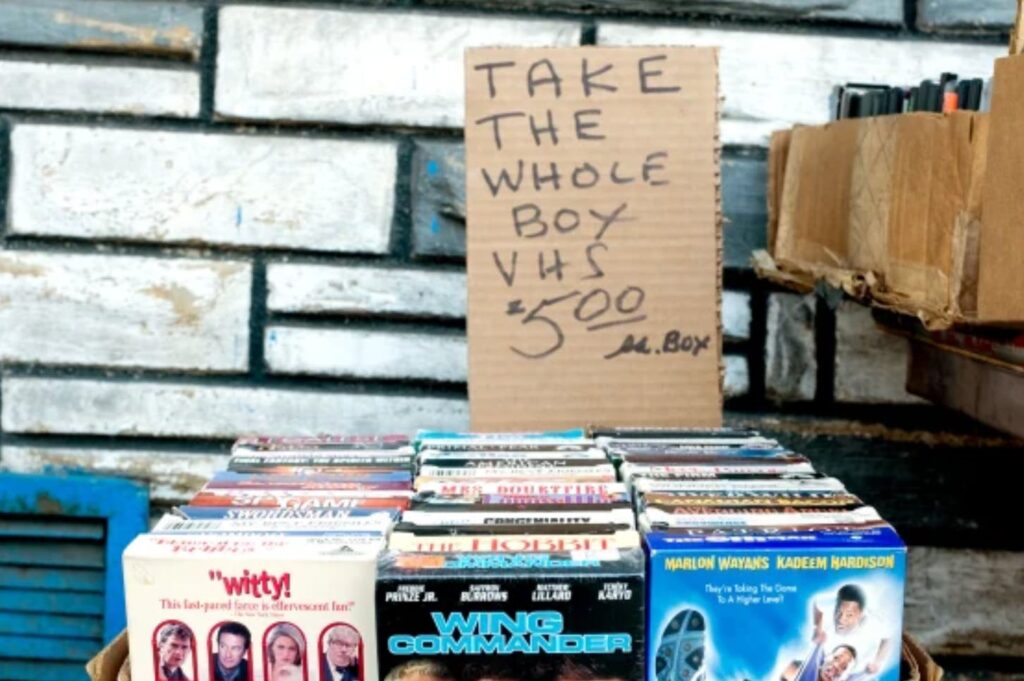
Yet, there is a market for VHS videotapes — even used ones.
eBay sellers are finding their stride, while boutique television stores, collectible markets, and even homemade VHS cinema museums have begun to pop up around the world. VHS’s sudden legitimacy as a collector’s item has quickly necessitated official grading services. More on that below.More on that below.
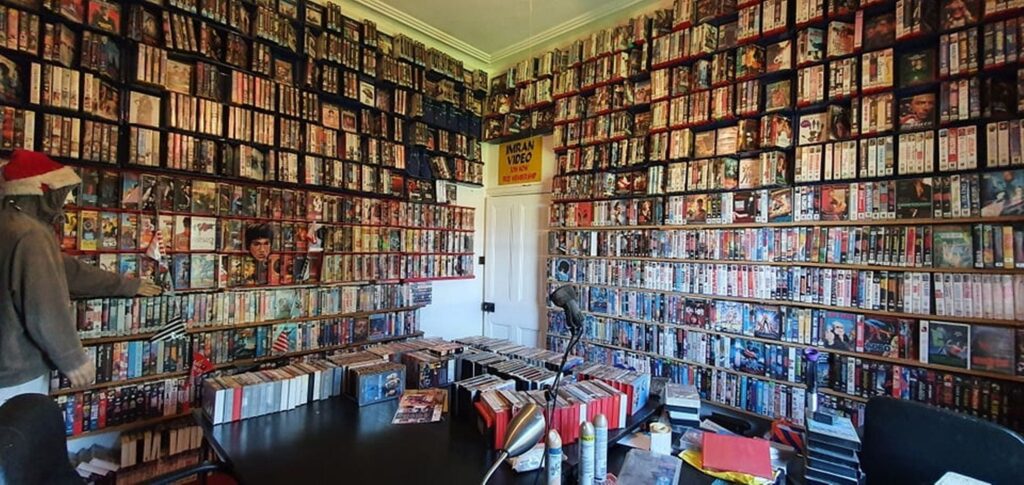
What makes a VHS valuable?
Condition
Like all collectibles, original sealed-in-box units fetch way more money than used tapes in tattered cardboard.
It all comes down to grading. The industry standard for grading VHS is from a company called VHSDNA. Meanwhile, collectibles company Certified Collectible Group now accepts VHS for grading, putting them in direct competition.
VHSDNA started when a guy with a ton of film knowledge and a passion for collecting began offering his services as a VHS expert. In addition to grading, the business now offers a range of VHS services, including certification, encapsulation, and tape/sleeve touch-ups.
TIP: If you have a high-quality sealed VHS tape, send it off to these guys. The process takes 1-4 months and costs between $150 – $200. Officially graded videotapes will nearly always be worth more than non-graded copies.
For example, a used VHS of Star Wars: A New Hope in very good condition goes for roughly $20. But a factory-sealed, 8.5 rating graded copy fetches $799.99! That’s a massive difference.
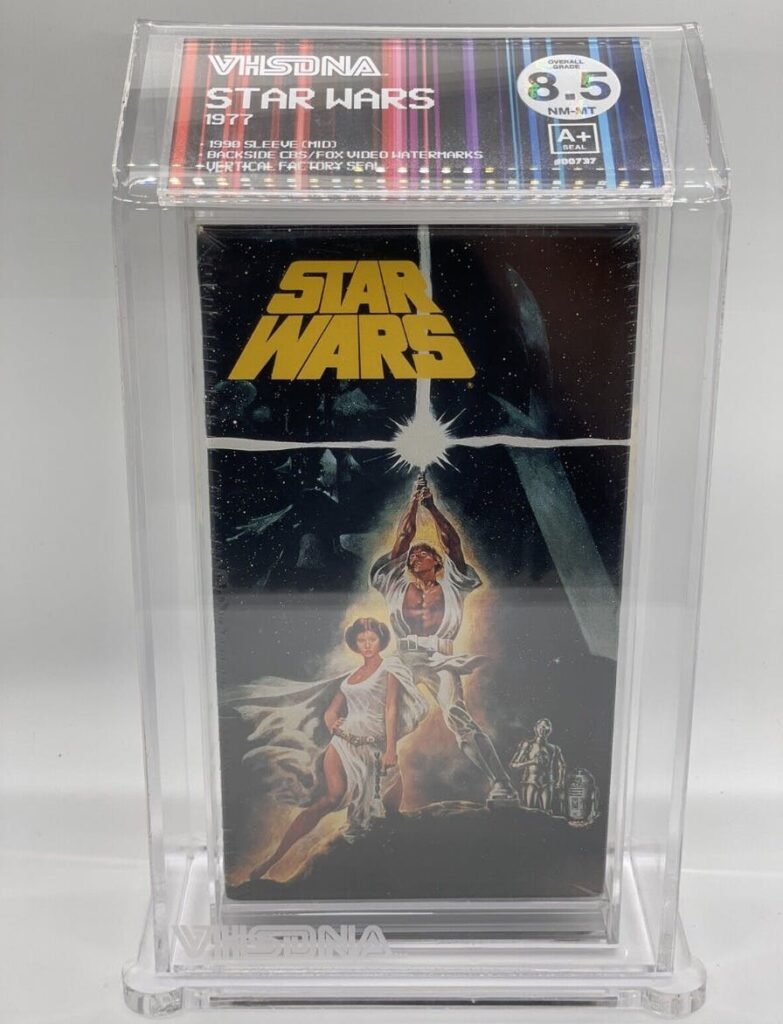
First pressing
First pressing video tapes are also nearly always more sought-after than newer re-releases.
To get an idea, we need to look no further than the kings of VHS, Disney. Considering how important nostalgia is to VHS value, Disney’s films from the 90s fit the bill perfectly.
The original pressings of Disney films are known as “Black Diamonds,” and they all have an imprint on top of the spine reading “The Classics”.
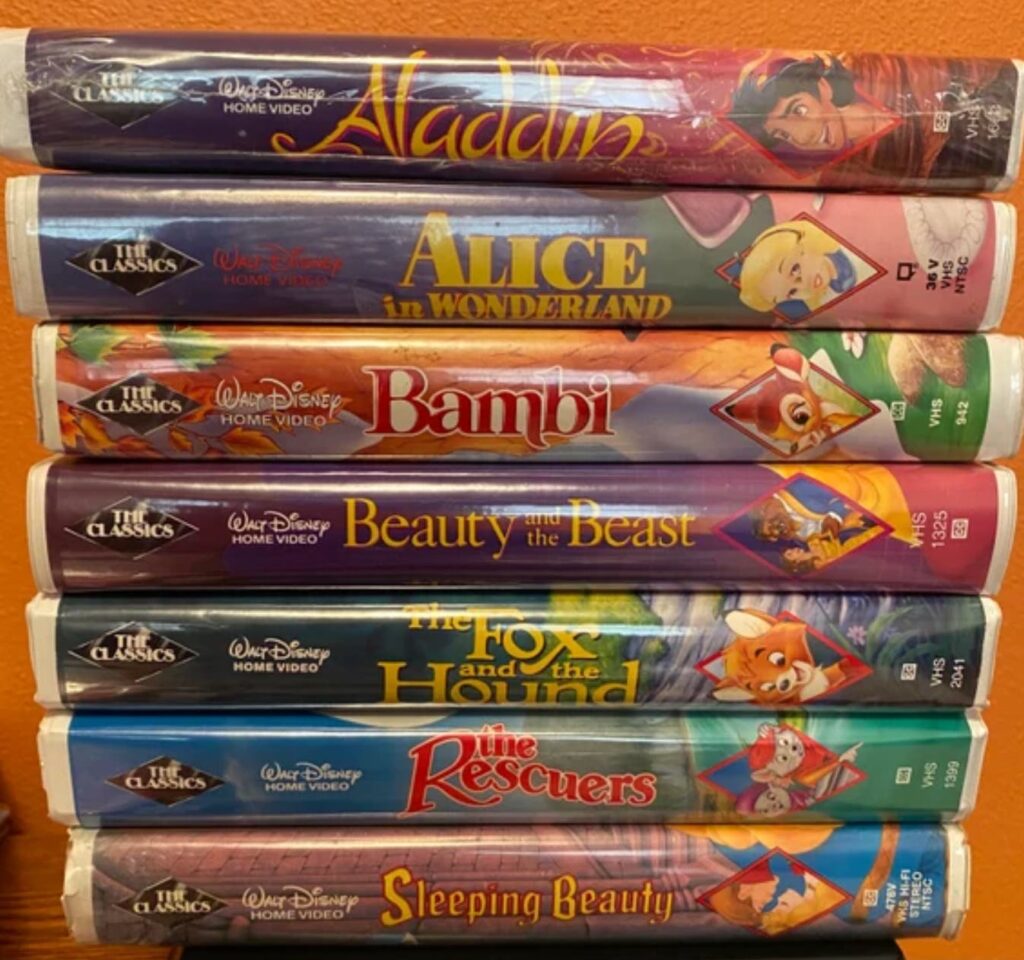
Black Diamond Disney films include Robin Hood, Alice in Wonderland, Cinderella, The Little Mermaid, Peter Pan, 101 Dalmations, Beauty and the Beast, and Aladdin.
So these Black Diamond tapes all go for a ton, right?
Well, not quite. It turns out the price of Black Diamond tapes is extremely variable.
For example, this mint condition Black Diamond version of Aladdin sold in 2021 for just $12.

And yet, the exact same VHS sold one year later for $10,556 (and it was in slightly worse condition!)
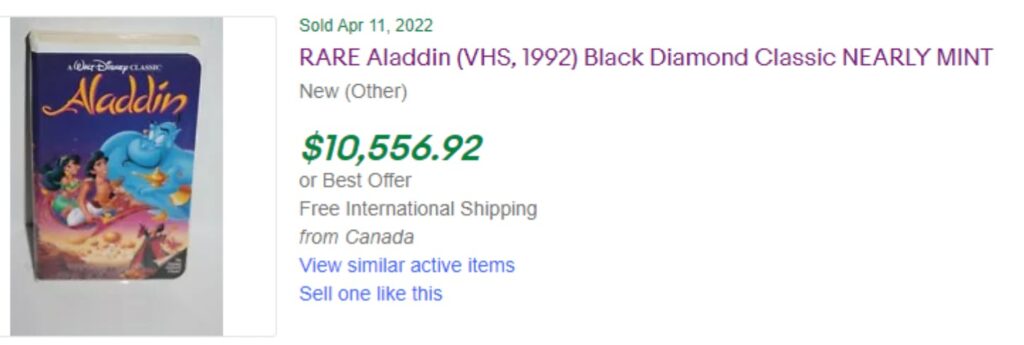
And this price volatility is nothing compared to the rarest of the Black Diamond collection – Beauty and the Beast.
Most sealed copies on eBay go for under $10. However, just a few months ago, the exact same edition sold for $37,777. (There are also reports of a used version that sold for $240k, but this is difficult to verify and may not actually be true.)
I don’t quite know what to make of these massive price differentials. The VHS market seems to be volatile. Mercurial. Finding its legs.
One thing’s for sure: Understanding the value of your collection can be the difference between making a couple of bucks to selling for thousands. Some are clearly willing to pay good money for Disney Black Diamond tapes, but it may take some patience.
Cult films
There are two reasons cult films could make a great investment.
First, cult flicks tend to have a rabid fanbase. Fans love feeling like they know something other people don’t, and the types of people who like cult films are more likely to be collectors.
Second, cult films and TV shows often bomb at release, and don’t become popular until years or even decades later. This creates scarcity since their popularity surges well after production has stopped.
While cult classics can span eras, genres and topics, there’s no denying that horror films often have a particularly dedicated fandom. For example, Vampire’s Kiss (1989) is one of the most ridiculous films ever made. It’s one of Nicholas Cage’s first acting gigs, and true to form, he is totally unhinged.

The film was demolished by critics at the time of its release. One of my favorite reviews about it came from the Washington Post:
“Stone-dead bad, incoherently bad… [but it] must be seen to be believed.”
As Cage’s prominence as a bit of a meme has risen, so too has the cult following for Vampire’s Kiss. A rare Japanese version of the film is currently listed on eBay for $100.
Killer Klowns From Outer Space is another 80s banger. The premise is exactly what you’d expect — a bunch of alien clowns come down to Earth and eat humans for food. Sealed first-editions are regularly listed for over $200.
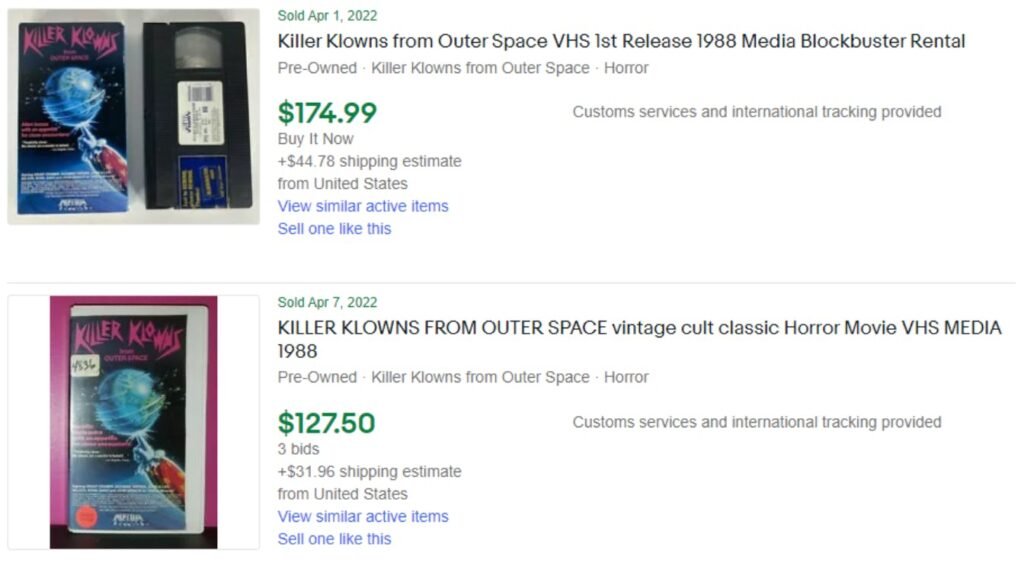
Other cult classics:
- Don’t Look In The Basement (1989): $35–110
- The Evil Dead (1981): $50–100
- The Legend of Hillbilly John (1972): up to $100
- The Thing (1990) An 8.5 graded edition of The Thing sold for $225
- The Texas Chainsaw Massacre (1982): some have sold for over $1,000.
The most expensive VHS ever sold
For many, Back to the Future is one of the greatest films of all time. Admittedly, this movie was a huge commercial success upon release (it was 1985’s top-grossing film.) But the movie’s influence has lasted far longer than anyone could’ve predicted.
Last week, a sealed, near-mint copy of the 1985 film was sold at auction for an insane $85,000, making it the most expensive graded VHS tape ever sold by far. (The previous record was $35k for a copy of Star Wars: A New Hope)
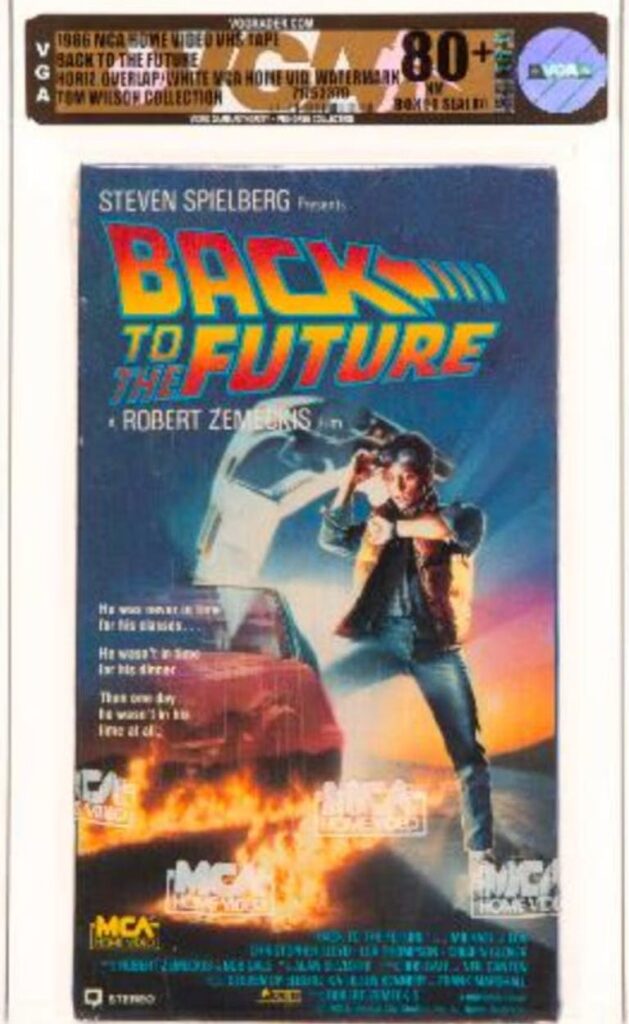
This was truly a significant moment for the VHS collectibles market, and the public reacted quickly. Hours after the hammer price was announced, prices of Back to the Future on VHS shot up like a Delorean.

There’s some evidence that this auction is already having an impact beyond the Back to the Future franchise.
Since the auction ended, sellers of Ghostbusters are now asking $1,000+, Peter Pans are on sale for $500+, and Goodfellas tapes are asking $650+ (Ray Liotta’s recent passing puts additional upward pressure here)
Wrapping up
VHS is an interesting asset class.
On a personal level, I don’t really get the appeal. The utility and quality of VHS tapes is nothing compared to, say, vinyl records. And pricing is all over the map. The exact same version of a videotape can sell for two completely different prices. This makes it a difficult market to understand, (but also creates some awesome arbitrage opportunities.)
Grading will help normalize the high-end of the market, and The Back to the Future auction results are certainly meaningful. It’s tough to tell if this is the beginning of “the next big collectible,” or if it’s just a flash in the pan, within a market already known for wild pricing.
But here’s what we know for sure — what was once old is now becoming new again, and investing in VHS is still in its infancy.
We probably won’t be watching this market too closely. But like a great 80s movie, rest assured we will be watching. 👀
How valuable will VHS tapes be in the future? We could tell you, if only we had Doc’s DeLorean…












